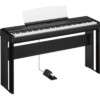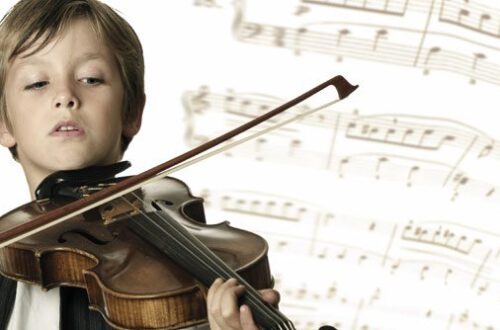Toy musical instruments
All children, without exception, love music, some like to listen to melodies and sing along, others like to dance to pieces of music. And no matter what the child does while listening to music, it in any case has an extremely beneficial effect on his development. In particular, music develops a child’s hearing, imagination, memory and creative abilities. There are a large number of different musical toys that can be used to introduce children to music and have a beneficial effect on their development. There are two categories of musical toys:
- The first category includes toys in which music sounds after pressing a button. These are all kinds of soft and not only toys that reproduce ready-made music.
- The second category includes toys in which some effort must be made to extract music. This category includes mainly toy musical instruments that differ from real ones only in size.
In this article we will take a closer look at the second category of toys – musical instruments.
Drums
It is better to start introducing your child to music through percussion instruments. No special knowledge in this area is required, slapped, knocked – the sound appeared. Even a six-month-old child can “play” instruments such as a tambourine and a drum. Older children begin to make sounds using sticks. This greatly expands the number of percussion instruments.
The shelves are used when playing the xylophone – wooden blocks of various sizes, lined up and tuned to different sounds, the metallophone – similarly, with the exception that the blocks are metal, the timpani – an instrument like a drum, and also on the triangle – in principle, quite serious an instrument that is part of symphony orchestras. There is also a huge number of original Russian percussion instruments: wooden spoons, rattles, rubles – a ribbed board played with sticks.
Wind
This type of instrument is more suitable for older children. The production of sound is different; if you blow, that’s the sound. With the help of wind instruments, you can extract a variety of sounds and even play a melody. At the first stage, it is better to start with simple tools – with whistles. Of course, they have the same sound, but there are different types of whistles: in the form of birds, animals, and so on. There are instruments that are more difficult to master: harmonicas, pipes and toy flutes. The main thing is that the child develops an interest in the instrument, and it will certainly arise.
Stringed
In this type of instrument, the sound is produced by a vibrating string. And you can’t play such instruments “just like that,” like, for example, drums or pipes. Therefore, strings are of interest to older children. To begin with, you can try to master playing the dulcimer – this is an instrument like the gusli, but the sound is produced using hammers. If the child already has sufficiently developed motor skills to “pluck” the strings, you can try the yoke on both the gusli and the balalaika. Yes, even on the guitar and harp – the only important thing is that the child has fun while playing.
Look what cool synthesizers for children are sold on Ozone! How to order them? Just click on the “buy” button, go to the store’s website and place an order. A couple of trifles and these wonderful toys are already in your hands! Please your kids with them!
Keyboards
The most common instrument in this form is the synthesizer. With its help, a child can listen to how different instruments sound. Organize a disco at a children’s party using ready-made melodies recorded on the instrument. The synthesizer often comes with a microphone, which allows the child to experiment with singing songs. And, probably, the most important point is that everything played and sung can be recorded and then listened to as much as you like, which allows you to develop creativity.
Whatever toy instrument parents and their child choose, it will have a beneficial effect on their development in many ways. The only thing you should consider are some points when choosing toy musical instruments:
- The sounds produced by a toy instrument should be pleasant to the ear and not frighten the child.
- The color of the toy should not be too bright, and the shape – the simpler the better. The variety of colors should also be kept to a minimum.
- The toy should not be overloaded with various functions and small buttons, this will disorient the child.
And if parents have purchased a toy musical instrument for their child, then they should be patient and listen to all the “sonatas” and “suites” of the novice musician.
To lift your spirits, watch a positive video of a child playing a toy guitar:



